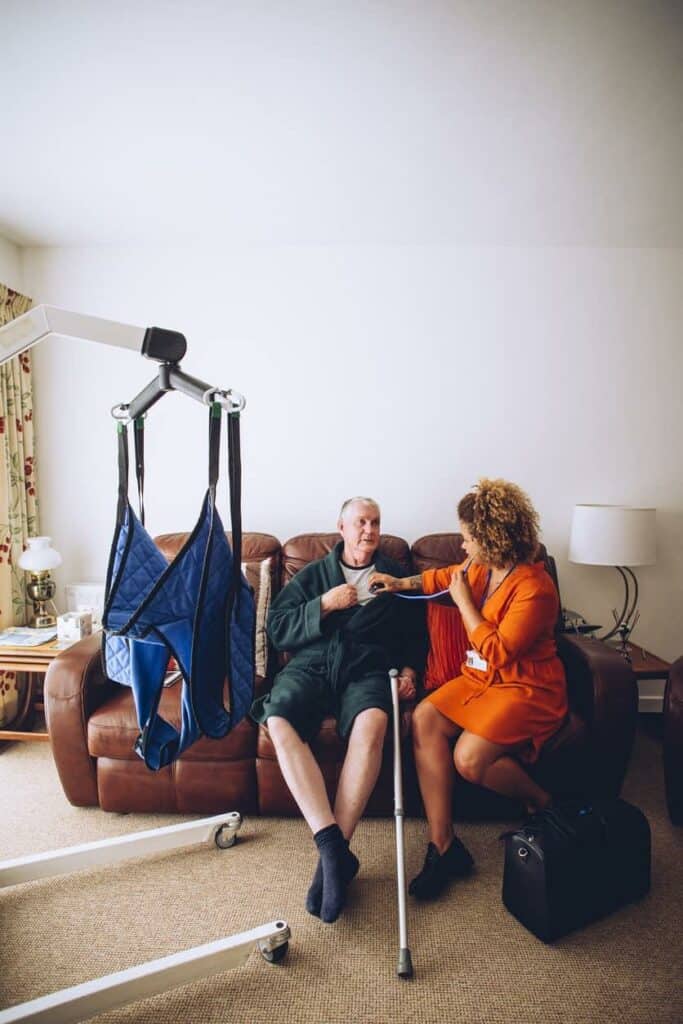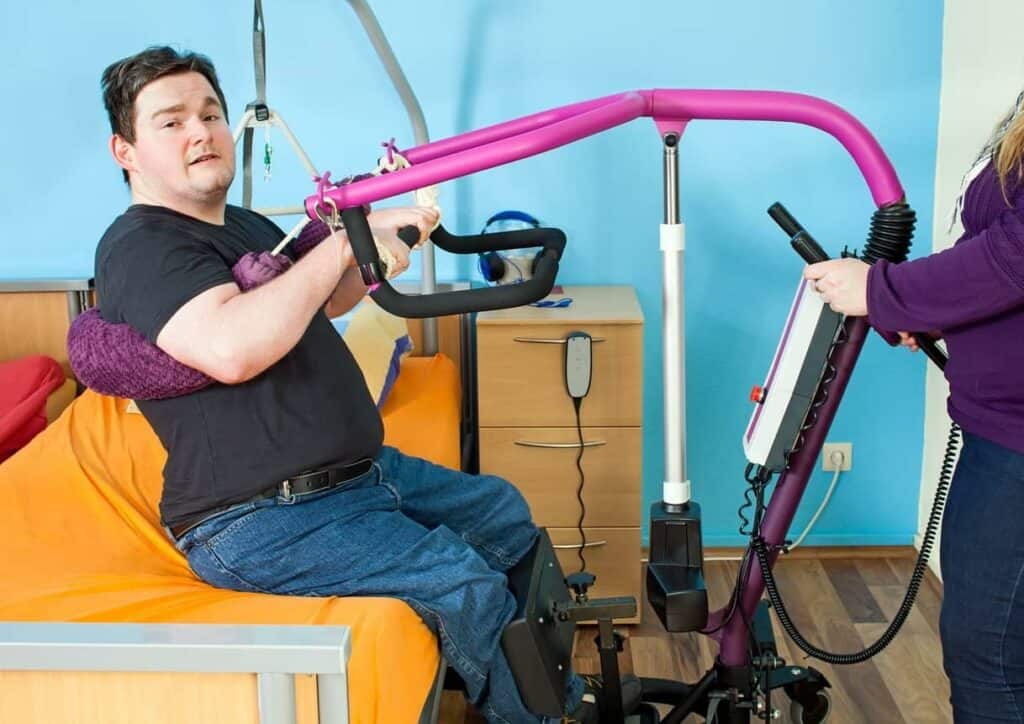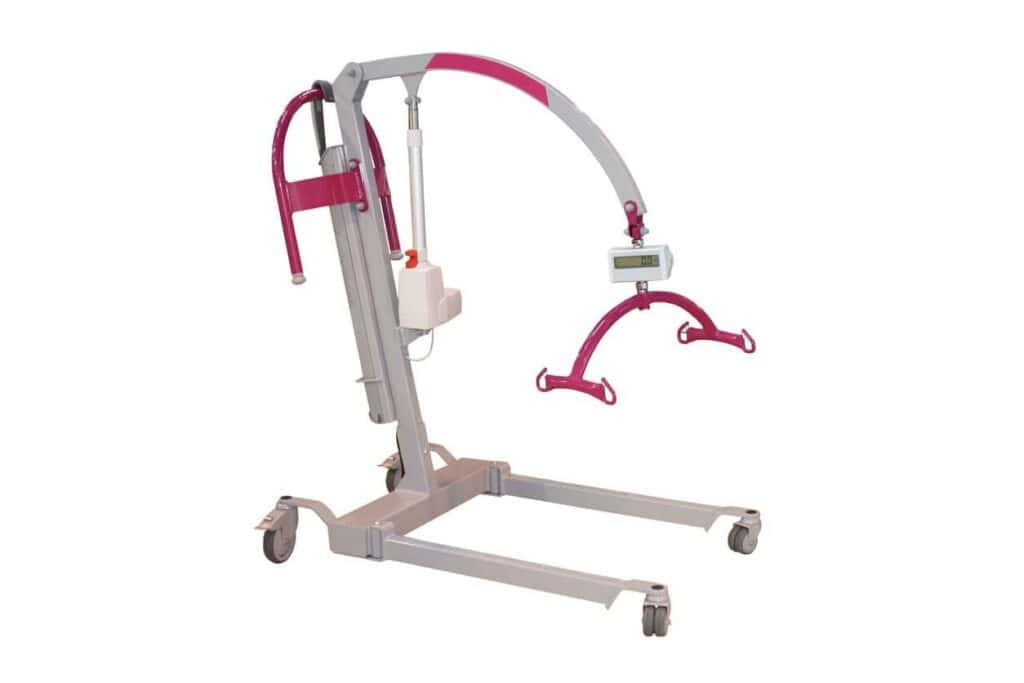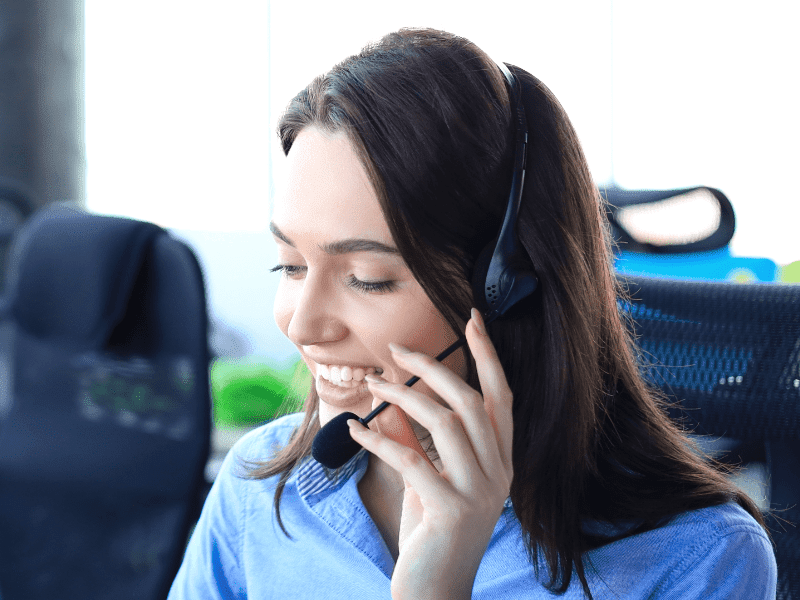Family Survey
Family Survey Please share your honest feedback to help us improve the care and safety of your loved one.
As a primary caregiver, your top priority is ensuring your loved one is safe and healthy. However, mobility issues that come with aging or health conditions can pose a risk to your loved one’s safety. It can also impact your ability to provide care, as transferring them with your physical strength can cause strains or injury.
To make transferring easy, you should consider mobility tools such as Hoyer lifts to make lifting easier and safer for all involved.
With Hoyer lifts or patient lifts, you don’t have to worry about the challenge of moving your loved one from the bed to the wheelchair or from the bathroom to another part of the home. You can buy or rent a manual Hoyer lift to help you move, transfer, or reposition your loved one as needed.

A manual Hoyer lift is a mobility tool that helps individuals battling mobility issues and challenges move from one position or place to another. A manual Hoyer lift can be used at hospitals, nursing homes, assisted living homes, and even at home, as they offer a safe and convenient way to move and transfer your loved one from one point to another.
These mobility tools are essential in providing easy access and a comfortable living environment for seniors needing help with their daily schedules and routines.
One of the most critical aspects of using a manual Hoyer lift is reading its manual and ensuring you familiarize yourself with it, as failure to do this may result in injury.
The next step is understanding the parts of the lift, as this will help you assemble it, or if you have a professional assemble it, you will know how each component works. Some of the features you need to familiarize yourself with include the following:

It’s essential to identify the base, wheels, and legs. In most cases, a manual Hoyer lift will have two legs that are parallel to the ground or floor and are supported by four legs. When using a hoyer lift, always ensure you do so on an even floor. By doing this, you will be providing stability for the lift and safety of your loved one.
This is the vertical handle that you will find next to the central column, and it brings the legs close together or moves them wide apart. This handle locks into a slot to prevent the legs from moving. When preparing to move your loved one, ensure you lock the legs once they reach their widest opening position and keep them that way when using the lift.
This is the long and angled bar at the top of the lift; you will need to connect a sling bar hanging from the end of the boom. The boom and sling bar are essential parts of the lift as you will use them to attach the patient sling when using the lift.
A patient sling is also known as a transfer sling. You can attach it to the lift or wrap it around or under your loved one, enabling the transfer. It’s essential to practice connecting the sling to the sling hooks without a patient on the lift.
There are three manual Hoyer lifts, each serving a specific purpose. They are
This type of manual Hoyer lift provides full-body support to your loved one and doesn’t require much participation from them. It’s one of the most common, and you can wheel it to your desired location. This mobility tool is ideal for lifting your loved one from the ground or floor to another surface.
With this type of manual Hoyer lift, you can assist your loved one in transferring from a sitting to a standing position, helping them maintain some form of independence. This type of patient lift is portable and ideal for a person who can bear some of their weight and only needs assistance in moving from a sitting position to a standing one. Your loved one will benefit from this hydraulic Hoyer lift as it supports their legs and torso, enabling their participation in the transfer.

This type of manual patient lift utilizes a track system that you will install in the ceiling and helps move your loved one throughout their house. One advantage of this mobility tool is that it doesn’t require the creation of additional floor space, making it ideal for smaller areas.
Choosing an ideal type of Hoyer lift equipment can be challenging, but the following tips will help you immensely.
You will have to assess your loved one’s needs; for instance, if they can move alone and only need assistance standing from a sitting position, then buying a sit-to-stand manual Hoyer lift will be the right choice.
One of the crucial aspects of a Hoyer lift is weight capacity. Although most manual patient lifts can lift various weights, it’s vital to ensure it can accommodate your loved ones’ weight as it provides a safe transfer experience.
You will need to buy a lift that you can adjust to fit the desired height and at the same time has comfortable features. You want your loved one to be comfortable during the transfer, and having a lift with these features will be an added advantage.
When researching Hoyer lifts, you will find that some designs serve the purpose of raising your loved one from a sitting position directly upward without extending the boom much. In contrast, other lifts have smaller booms and are ideal for smaller spaces, like small doorways. It would be best if you bought or rented a patient lift, depending on where you intend to use it. For instance, a shorter boom is ideal for in-home care, whereas a longer boom is ideal for bariatric patients.
Regardless, most Hoyer lifts have adjustable width and low-profile design, making it easy for the product to navigate around wheelchairs and other furniture, supported by smooth-rolling casters for optimum portability.

There are some safety guidelines to follow when operating a manual Hoyer lift, which helps keep you and your loved one safe. They include the following:
It’s crucial to obtain training on the proper use of a manual Hoyer lift before operating it, as this ensures your safety and that of your loved one. You will need to observe the following steps before using a patient lift:
Hoyer lifts can be manual or electric. The table below shows the differences between both.
| Manual Hoyer Lift | Electric Hoyer Lift |
|---|---|
| Uses a hydraulic or a lever system to move or transfer a patient | Uses batteries or electric power to lift and reposition the patient |
| More physically demanding on the caregiver | Less physically demanding on the caregiver |
| Cost-effective | A little bit expensive |
| Less maintenance upkeep | Need more upkeep for a smooth operation |
| Less compact | More compact |
| Convenient where the space for maneuvering a patient is limited | Can operate in a spacious room |
| Medicaid may cover part of the cost | Medicaid doesn’t cover the cost |
| Lightweight | Heavier |
| Smaller design | Larger design |
Where to Find and Purchase Manual Hoyer Lifts
When you decide to buy a hydraulic Hoyer lift, you can find more information from:
While purchasing a hydraulic Hoyer lift, you must consider our loved ones’ needs, their house design, and your budget. Remember to ask about their return policies and warranty, and whether they offer after-sale services, replacement services, customer support, and training on how to use the Hoyer lift properly.
Buying a manual Hoyer lift can be one of the best decisions you can make, as it will help you avoid straining your neck and back when lifting your loved one, which are some of the most significant challenges to caregiving. Apart from this, Hoyer lifts guarantee your loved one’s safety as it reduces the risk of falls, which can derail their recuperating process.
Caring for a loved one can take a toll even on the strongest person, and you will need to take a break occasionally to recharge. Exploring senior care options gives you peace of mind, knowing you have someone trustworthy looking after your loved one in your absence. You don’t have to wait until you’re overwhelmed or experiencing burnout before consulting with a senior care provider.
Discuss the various senior care options available to your loved one and research the cost. It’s crucial to talk with your loved one and find out about their wishes, and when the time is right, honor their wishes.
If you need an extra pair of hands to assist your loved one while you take a break, or to operate a manual Hoyer lift, you can contact us today to find the ideal caregiver near you.
Get care >
Family Survey Please share your honest feedback to help us improve the care and safety of your loved one.
Professional Senior In-Home Care in Carson City Keep your loved one in the comfort of their cherished home. Amy’s Eden delivers exceptional senior care services

The Best Home Care in Reno, NV The comfort of your home, the quality of Eden. We provide compassionate, professional in-home care services for seniors
A Real Home for Assisted Living in Carson City, NV Give your loved one the exceptional, personalized care they deserve. Our senior care homes in

Amy's Eden Senior Care © 2023